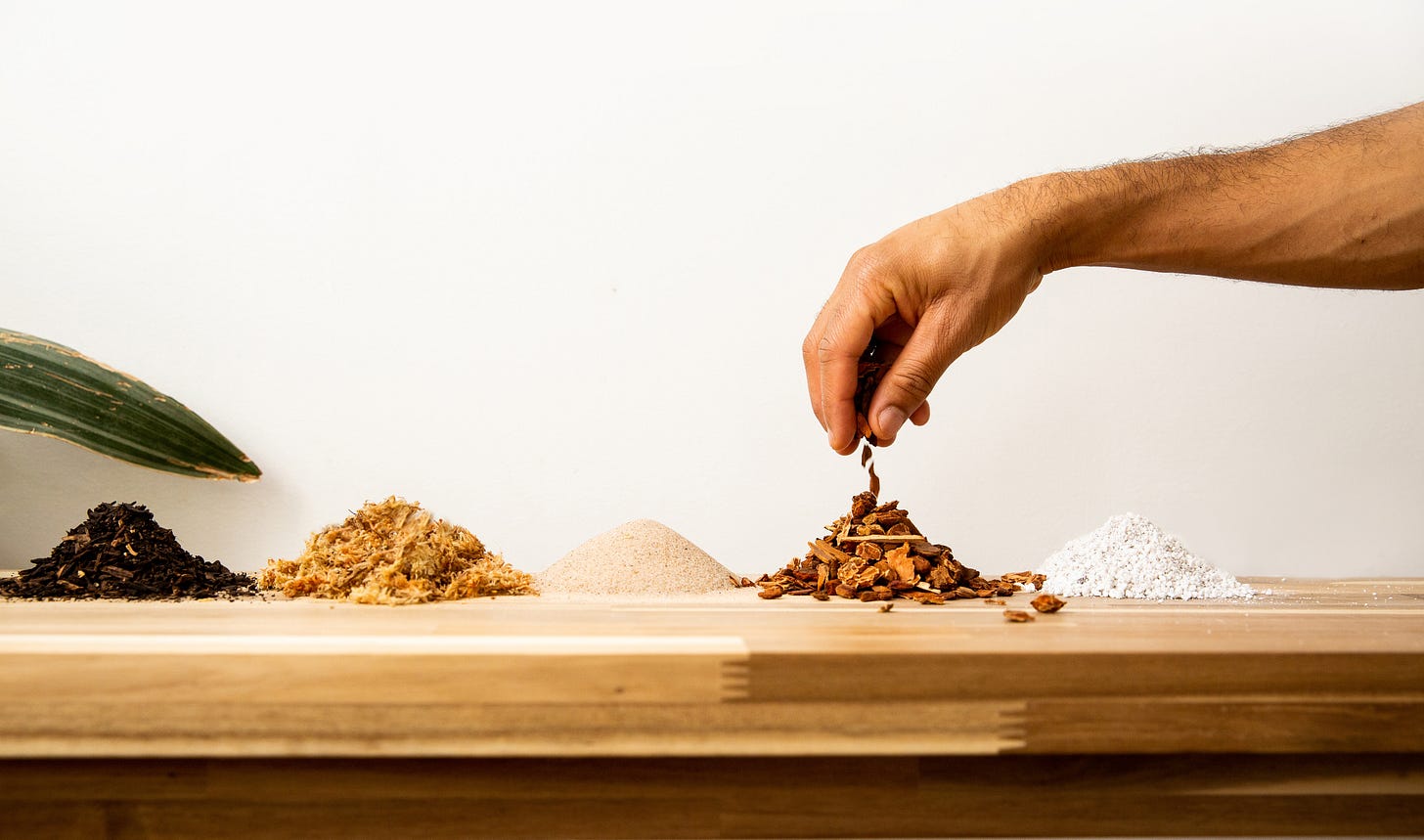Time for Repotting?: How to Know If Your Plant Needs a New Pot This Spring
Your green gurl might be giving you signs she’s ready to level up—are you catching the hints, dahling?
Spring is all about fresh starts, and your leafy kweens are no exception. As days get longer and plants kick into growth mode, some of them might be itching for a new pot, more space, and fresh soil to stretch those roots. But how do you know it’s time for a repotting glow-up, and what’s actually happening in that root system, hunny? Let’s dig in with some horticultural know-how, made fabulous and accessible.
Why Repotting Matters
Plants grow not just above ground, but below, too. Their roots are the lifeline—absorbing water, minerals, and oxygen from the soil. When roots outgrow their pots or the soil becomes depleted, your plant's health can start to decline. Repotting gives your lush kween the room, nutrients, and stability she needs to thrive.
🌱 Root Health = Plant Health Healthy roots are firm, white or tan, and spread evenly through the soil. When a plant becomes root-bound (roots circling the pot and crowding each other), it can lead to stress, stunted growth, poor water absorption, and even root death. Repotting relieves this pressure and allows roots to grow freely, efficiently accessing nutrients and water.
🌿 Soil Nutrients Deplete Over Time Even if your plant isn’t root-bound, the soil it lives in can become compacted and stripped of nutrients over time. Regular watering leaches essential minerals out of the soil, and microbial activity declines, leaving your green gurl with little to feed on. Fresh soil = fresh nutrients = happy plant.
💧 Improved Drainage and Aeration Old, compacted soil can hold too much water and restrict airflow to roots. Repotting with fresh, well-draining soil improves both water movement and oxygen availability, preventing root rot and promoting healthier root growth.
All the Signs It’s Time for a Repot
Your plant won’t send you a calendar invite, but she will show you she’s ready:
Roots Are Peeking Out – From drainage holes or above the soil? That’s your cue that she's cramped.
Water Rushes Through the Pot – If soil dries out too quickly or water barely absorbs, roots may have taken over.
Stunted Growth or Leaf Drop – Not growing despite ideal conditions? Roots might be too crowded or starved of nutrients.
Cracked Pots or Bulging Sides – Plastic pots can warp if roots are bursting at the seams—hello, tight squeeze!
Salt or Mineral Buildup – White crust on soil or pot rim? Old soil is tired and needs refreshing.
Wilting Despite Watering – If your plant stays droopy even after watering, the roots might be too tangled or damaged to absorb moisture.
Poor Drainage or Soggy Soil – Soil that stays wet for days is a sign of compaction or root issues, both calling for a fresh start.
Choosing the Right Pot and Soil
When upgrading, size does matter, but bigger isn’t always better.
🪴 Pot Size Rule: Go up just 1-2 inches in diameter for small plants, 2-4 inches for larger ones. Too big, and the plant may sit in soggy soil, leading to root rot.
🌿 Drainage is Queen: Always choose a pot with drainage holes. No drainage = risk of waterlogged roots, which can suffocate your plant.
🌱 Soil Matters: Match the soil to your plant's natural habitat. Cacti/succulents love gritty, fast-draining mixes. Tropical plants like monsteras or calatheas prefer rich, organic, moisture-retentive blends.
Repotting 101: Step-by-Step with Science
Water Your Plant a day before. Moist roots are more flexible and less prone to damage during repotting.
Gently Remove from the current pot. Tap the sides or squeeze the pot to loosen roots. Avoid yanking!
Inspect the Roots: Trim off mushy, black, or dead roots with sterilized scissors. This promotes healthy regrowth.
Loosen the Root Ball: Gently tease apart circling roots to encourage outward growth into the fresh soil.
Add Fresh Soil to the new pot's bottom, place the plant in, and fill around the sides. Tap the pot gently to eliminate air pockets.
Water Thoroughly: Saturate the soil to settle everything in place. Hold off on fertilizing for 2-3 weeks—your plant needs time to adjust before being fed.
Repotting Isn’t Always About Bigger Pots
Sometimes, your plant doesn’t need more space, just fresh nutrients. If your plant seems content in its current pot but has been in the same soil for 1-2 years, soil refreshing is your best bet. Gently remove the top 2 inches of soil and replace it with fresh mix to boost nutrients without disturbing the roots.
Spring: The Best Season to Repot
Spring is ideal because plants are entering their active growth phase. Their biological processes are revving up, allowing them to recover faster from root disturbance, adjust to new soil, and use fresh nutrients for vigorous growth.
Repotting during dormancy (fall or winter) can stress a plant, but in spring? It’s a refresh that sets your green gurl up for a season of lush, vibrant growth.
Final Thoughts: Repotting is Plant Self-Care
Repotting isn’t just about aesthetics or bigger pots—it’s about giving your plant the best possible environment to thrive. By understanding the signs, the biology, and the process, you empower yourself to support your plant’s health from the roots up.
So if your plant is sending you signs that she’s ready to level up, don’t wait. Give her the space, nutrients, and fresh start she deserves—and watch her flourish, dahling.
With love and a lil’ sparkle,
Plant Kween





Thank you. Good info for someone like me with a brown thumb who loves plants.
Thanks for this! May I ask a related question? I have a begonia maculata cutting that I put in water to root. How do I know when it’s time to transfer it to a pot with soil mix?